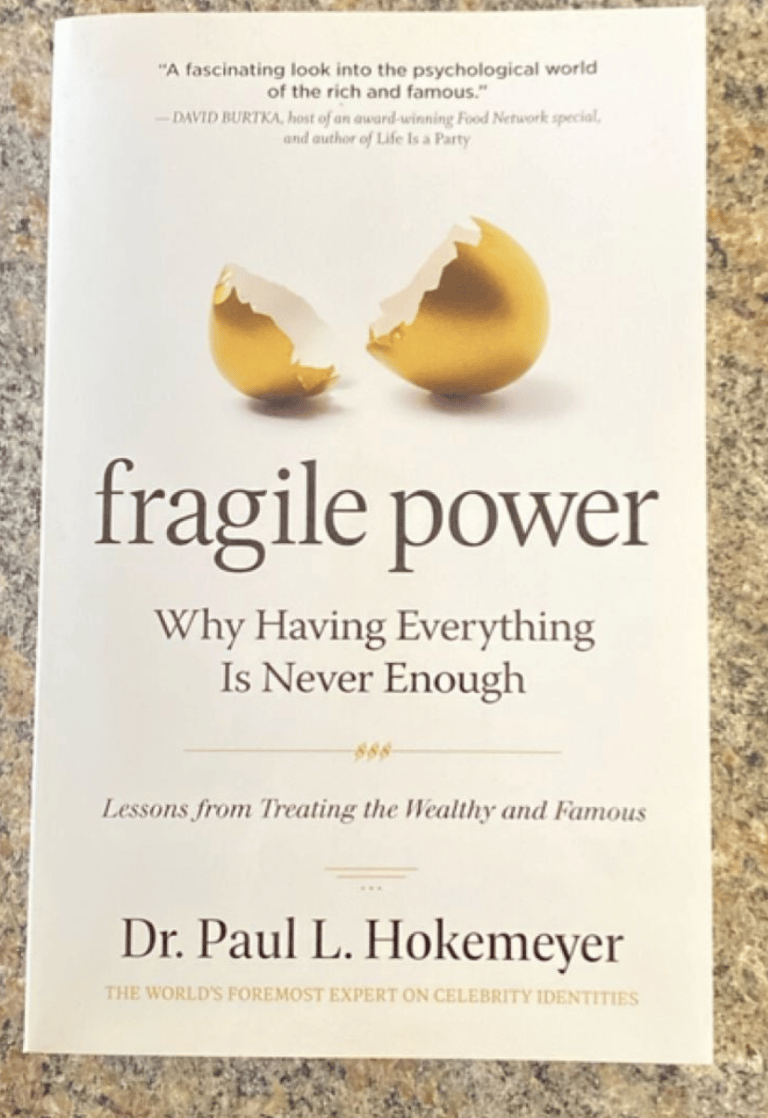Fragile Power: Therapy for the Rich, or a Mirror for You?
Real argument: Extreme wealth and status don’t eliminate suffering. They mutate it. Money, fame, legacy pressure, and constant exposure create their own psychological traps that standard therapy often doesn’t address. Verdict: Read if you work with or for high-power individuals and need a psychological map; borrow if you’re here for voyeurism.
BOOKS
11/1/20257 min read


The Big Idea
The book makes a blunt claim: having massive wealth, fame, and access doesn’t make you emotionally invincible. It can make you structurally fragile. The author, writing from the point of view of a therapist who works with ultra-high-net-worth and high-visibility clients, argues that power isolates people, distorts feedback loops, and locks them into high-stakes family, brand, and legacy dynamics that normal people don’t face at that scale. The suffering is real, even if it’s hard to feel sympathy for the person suffering. The stated goal is not pity. It’s literacy.
What’s New Here (and Why It Matters)
Most books about extreme wealth are either (1) finance porn or (2) morality plays. This one tries to be clinical. The novelty is the framing of “privilege pathology”: patterns of addiction, anxiety, self-erasure, rage, and relational breakdown that are fueled not by scarcity, but by surplus. You learn how money-especially inherited or sudden money—reshapes identity, boundaries, marriage, parenting, trust, and recovery. The book is also useful because it names a tension most people don’t talk about out loud: when you become an “asset,” people stop relating to you as a person.
Core Arguments / Plot Architecture (spoiler-safe)
Part 1: The Myth of Having It All. Being rich/famous is sold culturally as “freedom.” In practice it often means surveillance, liability, and weaponized relationships. You are always “on” because your existence feeds other people’s narratives and cash flows.
Part 2: How Power Warps the Self. The stronger the brand, the more the private self erodes. You start managing perceptions instead of feelings. You outsource regulation (publicist, fixer, lawyer, handler) instead of actually self-regulating.
Part 3: How Power Warps Relationships. Trust becomes transactional. Family systems get politicized. Intimacy turns into negotiation over access, loyalty, and inheritance.
Part 4: Repair. Stabilization, boundaries, and evidence-based treatment, but adapted for people who cannot just “disappear to rehab” without PR fallout, shareholder panic, or media exposure.
Evidence style: Anonymized case studies, clinical takeaways, and thematic analysis. This is more narrative-psychology than stats.
Deep Dive
Frameworks & Models
The book puts forward a few repeatable lenses:
Identity as Asset vs. Identity as Self
Use: Ask: Where am I acting like a brand (performative, compliant, strategic) and where am I acting like a human (authentic, messy, not optimized for optics)? The claim is that chronic brand-performance erodes psychological stability.
Application: High-power people-but also founders, influencers, even managers-start living inside the asset version of themselves, and it quietly kills honest feedback.
Power Bubble / Isolation Loop
Use: Map who tells you “no.” If that list is short, you are in a psychological danger zone. According to the book, people with extreme wealth or fame tend to push away challengers (because it’s annoying and inefficient), then complain that no one tells them the truth.
Application: Write the names of 3 people who can confront you without fearing financial or social retaliation. If you can’t list 3, that’s not “freedom,” that’s structural risk.
Substitution Coping
Use: Money and influence let you buy mood changes instantly-vacations, substances, professional enablers, new partners, damage-control teams. The book frames this as “treating symptoms with lifestyle upgrades instead of treating the wound.”
Application: Ask, “Am I solving or soothing?” Soothing is fine. But if soothing is all you ever do, you’re building a private catastrophe.
Legacy Trauma
Use: In dynastic wealth, you’re not just a person; you’re a vessel for “the family.” The book argues this creates anxiety, guilt, imposter syndrome, and sabotage-especially in next-generation heirs who didn’t build the fortune but are expected to preserve it.
Application: If you exist inside someone else’s myth (founder parent, political surname, public last name), you need your own parallel narrative-or you’ll rebel destructively just to prove you exist.
Evidence Check
Strong: The book’s strength is qualitative pattern recognition. The cases show the same emotional fractures repeating across actors, finance elites, media figures, and legacy families: isolation, paranoia, addictive numbing, weaponized intimacy, and control battles dressed up as love.
Weak: This is not a randomized controlled trial. It’s based on clinical impressions and anonymized stories. That means two things:
Survivorship bias: we’re hearing about the people who sought help, not the silent functional rich who are doing fine.
Attribution bias: “wealth caused this” is sometimes clear, sometimes speculative. Wealth can create conditions that amplify pre-existing issues, but it’s not always the root cause.
Assumptions Under the Hood
That extreme wealth and fame produce psychological harm that is meaningfully different in quality, not just degree.
That intervention is possible if you can build a confidential, truly neutral therapeutic container.
That most “inner circle” actors around powerful clients are financially or reputationally entangled and therefore unreliable as sources of truth.
These assumptions mostly track with common-sense power dynamics. Still, they’re assumptions. The book doesn’t pretend to be neutral; it’s written from the inside of that therapeutic stance.
Practical Takeaways
This book is more clinically reflective than tactical, but you can still extract a playbook:
Audit your circle for honesty, not loyalty. Loyalty without honesty is flattery. Honesty without loyalty is attack. You need both. Write down who qualifies.
Separate image management from emotional regulation. If your first instinct after any crisis is “how will this look,” you’re not processing reality, you’re doing PR on yourself. That’s not coping, that’s branding.
Stop outsourcing responsibility to “fixers.” If you keep people on payroll to clean up your mess, you’ll never get data on how much damage you actually do. That blocks growth and keeps you emotionally adolescent.
Name the dependency. Is it substances, validation, control, secrecy, work, status? Money lets you escalate dependency quietly and socially acceptably (“It’s not a problem, it’s just how I cope”). Write it down anyway.
Draw a boundary around inherited expectations. If you’re living someone else’s dream-parent, partner, board, fanbase-write one sentence that is yours alone. This is not fluffy. This is identity hygiene.
Treat privacy as healthcare, not vanity. The claim is that high-profile clients need protected space not because they’re “above” others, but because public humiliation triggers defense, not healing. You probably don’t live under paparazzi, but you might live under Slack, group chat, or family WhatsApp surveillance. Same logic: not every crisis needs to be crowdsourced.
Micro-Playbook:
Who tells me “no”?
What am I using to numb?
Where am I performing a role I didn’t choose?
Where am I hiding something I should treat?
Who benefits if I stay unwell?
If you’re not rich or famous, run this anyway. The mechanisms (performing, numbing, image-management, legacy guilt) exist at normal income levels too. Money just cranks the volume.
Contrarian Note
The book risks overselling “the pain of the privileged.” Yes, power isolates. Yes, chronic visibility can be psychologically violent. Also true: money buys literal safety, medical care, and exit options most people will never have. That matters. There’s a fine line between “power has a psychological cost” (true) and “power is its own prison” (romantic, and convenient for the powerful). The second claim can be weaponized to dodge accountability. The reader should hold that tension.
Why this matters: if you advise or work under someone powerful, you need empathy to manage the relationship—but not so much empathy that you excuse harm.
Blind Spots & Risks
Structural harm is underplayed. The book focuses on inner pain of the wealthy and famous, less on the external damage they can cause when they’re unregulated, volatile, or addicted.
Ethics of disclosure. The narrative relies on patient stories (anonymized). That always raises questions: what counts as “enough” disguise? We are asked to trust the boundary work.
Cultural variation. The model assumes Western celebrity / Western wealth norms; it doesn’t go deep on global power systems, collective cultures, or non-media forms of influence (e.g., political dynasties in regions where fame ≠ Instagram).
Survivorship bias, again. We mainly see crises that broke containment. Quiet functional privilege is underrepresented, so the sample may skew dramatic.
Who Should Read This (and Who Shouldn’t)
Read if:
You manage, protect, advise, or are romantically involved with someone who has leverage (money, fame, family name, or control over other people’s livelihoods).
You’re next-gen wealth and feel guilty, angry, or numb, and don’t know why.
You’re in leadership and keep blowing up teams/relationships in the same way, despite “having everything.”
Skip if:
You want a takedown of the rich. This is not rage-lit.
You’re looking for step-by-step clinical interventions you can run solo. It’s not a workbook.
You’re allergic to therapists explaining power dynamics in moral language.
How to Read It
Pacing: One or two chapters at a time. Sit with each case; ask, “Where is this happening at my scale?”
Skim vs. slow down: Skim narrative detail that smells like confidentiality perfume. Slow down on the diagnostic language around isolation, enabling, legacy, and shame.
Format: Print/ebook is fine. You’ll want to mark sections on boundaries and enablers for later reference.
Pro tip: If you’re reading this about someone in your life, highlight patterns, not anecdotes. You can’t fix them, but you can stop feeding the pattern.
Scorecard (1–10)
Originality: 7 -The “therapy of the ultra-powerful” frame isn’t brand new, but it’s rarely this explicit.
Rigor / Craft: 6 -Clinically informed, but mostly case-driven. Minimal data, heavy narrative.
Clarity: 8 -Direct, readable, no academic fog.
Usefulness: 8 -High if you navigate wealth/power dynamics professionally or personally.
Re-read Value: 7 -Worth revisiting when you start excusing destructive behavior just because it’s wrapped in status.
If You Liked This, Try…
Maybe You Should Talk to Someone (Lori Gottlieb): Therapist-in-the-room storytelling about breakdown, repair, and the mess behind “high-functioning.”
Dying for a Paycheck (Jeffrey Pfeffer): How work at the top (and striving for it) becomes a health hazard; systems view instead of clinical view.
The Psychology of Money (Morgan Housel): How money distorts identity, fear, and decision-making across classes.
Empire of Pain (Patrick Radden Keefe): A forensic look at legacy, power, denial, and moral insulation inside a dynasty.
So You’ve Been Publicly Shamed (Jon Ronson): Reputation as a weapon and a currency; adjacent to the “brand vs. self” problem.
FAQ
Is this book sympathetic to the rich?
It’s empathetic but not always flattering. It frames many powerful clients as both harmed and harmful. You’re expected to sit with both truths.
Is it gossip?
No names, no blind items. If you’re coming for who did what in rehab, you’ll be bored.
Can I use this to “fix” my powerful boss / partner / client?
Not directly. But you can stop enabling and start setting boundaries once you understand the pattern: isolation + entitlement + pain.
Does the author pretend money doesn’t help?
No. The book acknowledges that wealth buys insulation. The point is: insulation is not the same as emotional health.
Will this help if I’m not rich, famous, or adjacent?
Yes. The same mechanics-performance identity, enabling support systems, numbing through consumption-show up at normal income levels. Power just scales the blast radius.
Final Verdict
Fragile Power is not a pity party for billionaires. It’s a field guide to what power actually does to a mind, a marriage, and a family system when there’s no meaningful boundary, no honest feedback, and no one who can afford to say “stop.” The book is strongest as a pattern map and weakest as science, but that’s fine. If you move in these circles - or get paid by people who do-it’s a buy. If you just want to hate-read the rich, you’ll be annoyed, so borrow or skip.




